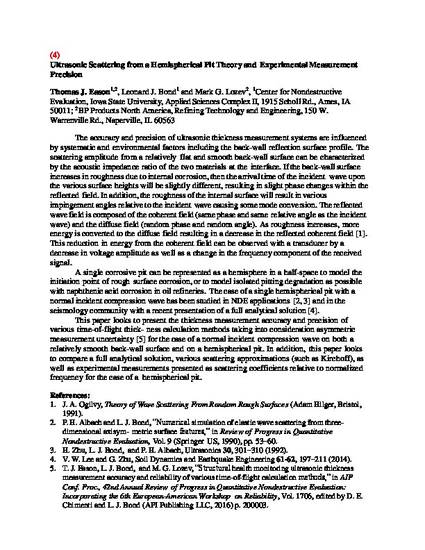
The accuracy and precision of ultrasonic thickness measurement systems are influenced by systematic and environmental factors including the back-wall reflection surface profile. The scattering amplitude from a relatively flat and smooth back-wall surface can be characterized by the acoustic impedance ratio of the two materials at the interface. If the back-wall surface increases in roughness due to internal corrosion, then the arrival time of the incident wave upon the various surface heights will be slightly different, resulting in slight phase changes within the reflected field. In addition, the roughness of the internal surface will result in various impingement anglesrelative to the incident wave causing some mode conversion. The reflected wave field is composed of the coherent field (same phase and same relative angle as the incident wave) and the diffuse field (random phase and random angle). As roughness increases, more energy is converted to the diffuse field resulting in a decrease in the reflected coherent field. This reduction in energy from the coherent field can be observed with a transducer by a decrease in voltage amplitude as well as a change in the frequency component of the received signal.
A single corrosive pit can be represented as a hemisphere in a half-space to model the initiation point of rough surface corrosion, or to model isolated pitting degradation as possible with naphthenic acid corrosion in oil refineries. The case of a single hemispherical pit with a normal incident compression wave has been studied in NDE applications and in the seismology community with a recent presentation of a full analytical solution.
This paper looks to present the thickness measurement accuracy and precision of various time-of-flight thick- ness calculation methods taking into consideration asymmetric measurement uncertainty for the case of a normal incident compression wave on both a relatively smooth back-wall surface and on a hemispherical pit. In addition, this paper looks to compare a full analytical solution, various scattering approximations (such as Kirchoff), as well as experimental measurements presented as scattering coefficients relative to normalized frequency for the case of a hemispherical pit.
Available at: http://works.bepress.com/leonard_bond/47/
